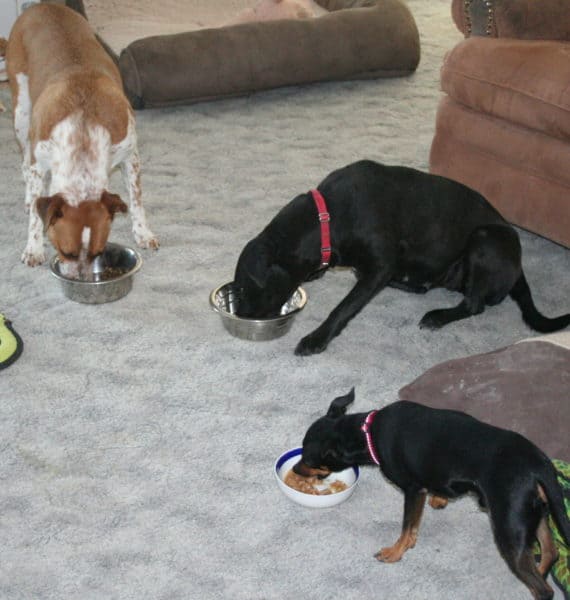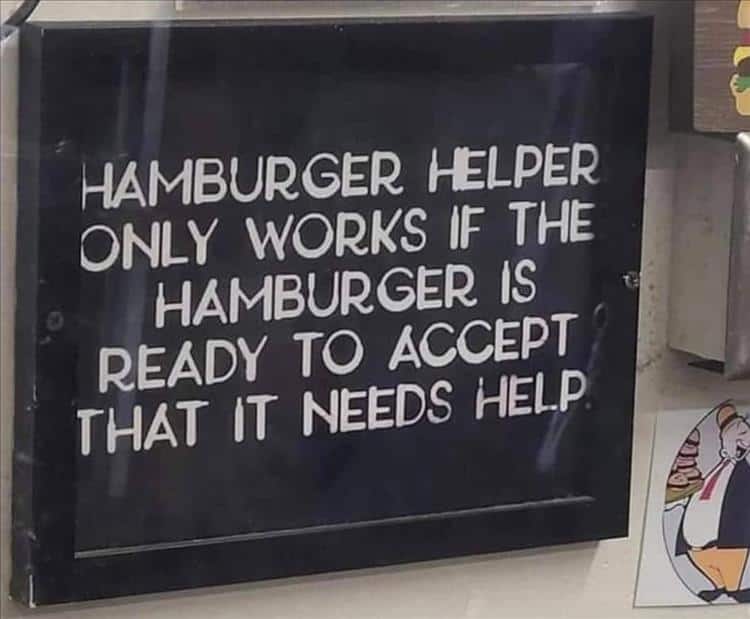Another of the commonly used magic phrases in describing dog behavior is territorial aggression. But what normally causes this in nature? And how does that ever fit for a dog in your house or back yard? These are just a few of the questions to examine here before we jump to any conclusions.
The Popular Views
Many dogs are territorial and feel compelled to protect their property. This is called “Territory Aggression”.
Fence Fighting – Why it occurs and how to resolve it!, Emily Scott
So before we jump into how to stop dog fence aggression we need to determine why it happens in the first place.
According to an article published by PetMD, the main cause for territorial aggression is defending food, objects, people and of course, the property. Because of their need to protect, dogs often bark excessively or even exhibit aggression towards the approaching stranger which they perceive as a threat, even though it might just be your mother-in-law at the door.
Dog Fence Aggression and How to Stop it
So they claim many dogs are territorial and feel compelled to protect their property. And they then call this Territorial Aggression, even against your mother-in-law. But are those behaviors really natural, or might there be something specifically different about the dogs who behave like that? Especially, if they happen to love your mother-in-law!
Some dogs are dangerous to other dogs, and even to humans, while they are eating. In fact, dogs can be aggressive in guarding everything they consider their possessions, such as food, bowls, items they steal or find, and toys. They are also very territorial and will defend any area they consider to be under their domain (e.g., the home).
Possessive and Territorial Aggression in Dogs PetMD
This PetMD article is curious both because it was written by a dog trainer, and by one who appears so very certain of her facts that she hasn’t read several decades of conflicting studies. On dogs being dangerous while eating, a number of studies such as the ASPCA on Food Guarding have shown that, while it’s one of the most common early issues with shelter dogs, it is also one of the easiest to resolve.

Generally, within just a few weeks, all of my foster dogs had their meals like this. They also learned how to take treats by name while next to another dog, and how to handle food dropped on the floor.
As for dogs simply guarding their possessions, that’s far more a developed human trait. Other than some favorite chew toy he likes to lay down with, socialized dogs rarely guard any items. Sure, they might compete for an item, but that’s all part of play. And, with all this, she never does explain just what a dog’s protected domain would be. Sure, they may live in a house and have a back yard. But, they also walk down the street, travel in a car, and may walk and play at the park. How would they know where this domain begins and ends? My point being that nothing she says here has any established validity, or even a clear definition.
After food, perhaps the most common item to guard might be a ball. For many dogs they come to not only love chasing the ball, but this is something they can do interactively with their owner, which makes it even more fun. This may be among the first things they learned, and for some is the highlight of their day. Given that situation along with very limited social skills, just what behavior would you expect if another dog goes after their ball? Or another child reaching for your kid’s favorite toy?
And in that typical situation I often see pet owners attempting to prevent any issues by then giving their dog some very clear and extensively detailed instruction, as:
Play nice!

Followed by yelling and physical restraint, because they were told that dogs just naturally guard things. Catch this issue at the start, and just a few days of other activities and social interactions with other dogs will resolve this. After a year or more of this nonsense, those needed days can easily turn into weeks, especially as the person now also has many bad habits to break.
The Causes
Getting back to territorial aggression, we are given a list of possible causes.
- Underlying medical conditions
- Poor socializing as a puppy
- Sexual maturation
- Inbreeding
- Environment
- Pack order behavior
- Genetic (or normal to the particular dog or breed)
Medical conditions
I find it curious that most articles in veterinary blogs always seem to give underlying medical conditions as the first and most likely cause for some behavior problem. Where, in reality, it’s more likely at the very bottom of the list. Feel free to go and try that, by taking any behavior issue and asking your veterinarian about possible underlying medical conditions. Most will just suggest seeing a dog trainer.
Poor puppy socialization
At one end, is she saying that teenagers and adults cannot learn? Or, at the other end, that puppies are even capable of learning adult social skills? In many cases there’s something called puppy license, where social adults will tolerate impolite puppy behavior only until they reach a certain age. Past that point the growing pup will be corrected until he learns manners. Given that a similar thing happens with humans (and many other species), it’s obvious there are limits to how socialized a young puppy can become.
Sexual maturation
Is this the only thing that happens? As any young puppy progresses through his teens into a young adult and later an older dog, his tastes in activities and interests may very well change. So what?
Inbreeding
This is just a very large wild card here, as the correct (or, incorrect) inbreeding can result in nearly any imaginable behavior pattern, often laced strongly with fear or aggression. From there, a little resource guarding or territorial aggression would be little more than a minor aspect of the overall issues with that dog.
Environment
She never mentions what actual factors are involved here. However, if your dog only lived in your back yard and has grown up knowing very few people or other dogs, that’s a pretty obvious environmental issue.
Pack order behavior
And they actually allowed this in a veterinary-based website? Let’s just refer this one to a veterinary behaviorist, as in Dominate with Dominance! which includes many other references on this topic.
Genetic

So she says it’s the breed’s fault, and that this is normal for them? Well, it this were a Tasmanian Devil she would have a good point. But, I don’t know of any dog breed to which this applies. Sure, many members of some breeds will have some common characteristics. Some Border Collies need a job, and will drive you nuts unless they have one. Breeds like that, if they have nothing but their job, may seem to guard things from other dogs.
But it’s not really the frisbee or ball (or sheep) they are guarding, but the job. With a little patience they can be taught to just pause and ignore the other dog. That’s different than the typical training for resource guarding, but these dogs have a very different motivation here.
As for other genetic issues, there are a number of anxiety-related pathologies where resource guarding is only one of many issues. As far as some genetic propensity for only resource guarding, I’ve never seen or heard of such a thing.
And the Missing Cause
Simply a lack of social skills in dealing with people and other dogs, causing him to become afraid and sometimes show defensive aggression.
The Treatment
You are probably not going to “cure” this aggressive dog, however, controlling the behavior is the goal. If the number of aggressive incidents can be decreased, you should feel that you have succeeded. A dog-training specialist can help you develop safety and management tools.
PetMD Editorial
How curious! Remember that earlier ASPCA study I referenced? Where resource guarding was not only the most common behavior issue, but also the easiest to resolve? If this can be easily cured over 96% of the time, why should you only try to manage it?
Safety should be the primary concern. Avoid situations that may bring on an aggressive reaction. If your behaviorist recommends punishment/dominance-based training techniques, you may want to seek alternative help, as it may escalate aggression. There are better ways to deal with the problem.
Yes, those dominance approaches were debunked maybe 50 years ago. Of course, her Pack Order was thrown out over 20 years ago. Instead, I teach the dog how to handle that situation in a manner both acceptable to people, and which the dog finds to be better for him.
Feed the dog in a confined space and do not give it items that might incite aggressive behavior. Confine it to areas where people can neither be heard nor seen. Finally, teach your dog to wear a head halter and basket muzzle.
In extreme cases, it may be necessary to put the dog down (euthanize), as it is sometimes the only way to assuredly prevent your dog from injuring others — especially those that have already been involved in an incident or incidents.
In the general case, it is true that you will not always succeed in getting the behavior you desire. However, isolating the dog and completely avoiding the situation instead will always guarantee failure, because you’ve given up right at the start. The dog simply gets no opportunity to relax his fears and learn different behaviors.
Frankly, following her advice may reduce your dog’s quality of life low enough that they will have little more to lose. I have worked with dogs who just generally did not care for most people (an acquired taste!), and I just taught them what to expect and how to avoid people. Behavior which the dog found much more pleasing than having to show aggression.
The Conclusion – Why Don’t the Trainers Change?
Nearly every animal will seek to protect familiar objects and territories against others who are unfamiliar. But, once they gain confidence and familiarity, the issue fades. With many dogs who seem to guard territory or objects, this change happens in weeks, and often only days. And this occurs so very many times that one could wonder just how any purported dog trainer could refuse to recognize this, or not be willing to at least rationally discuss this issue.

